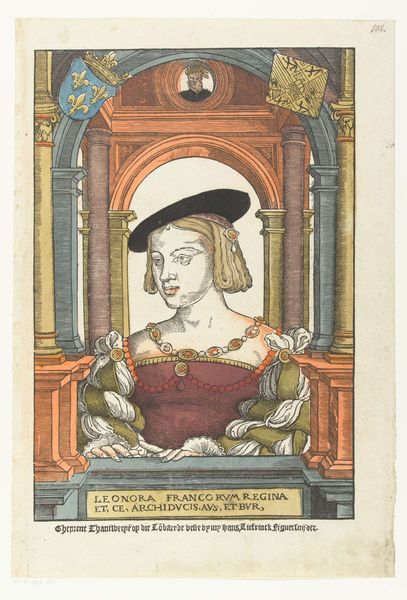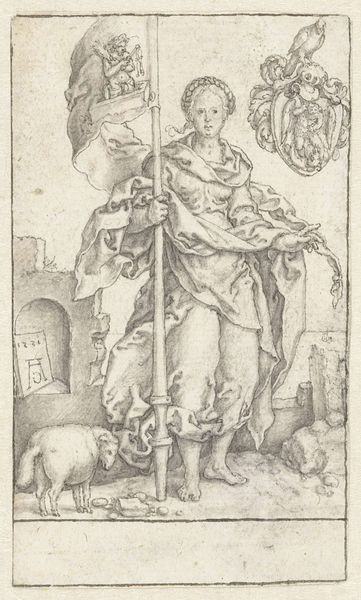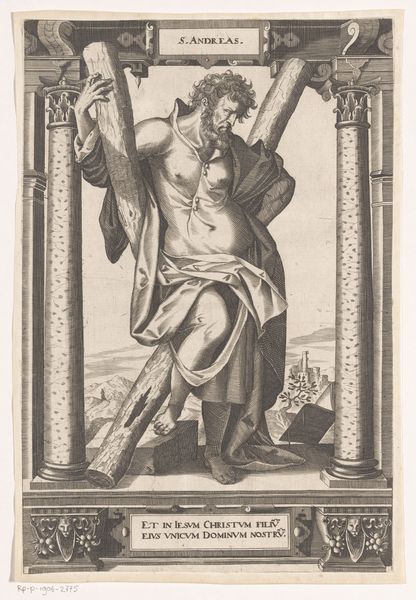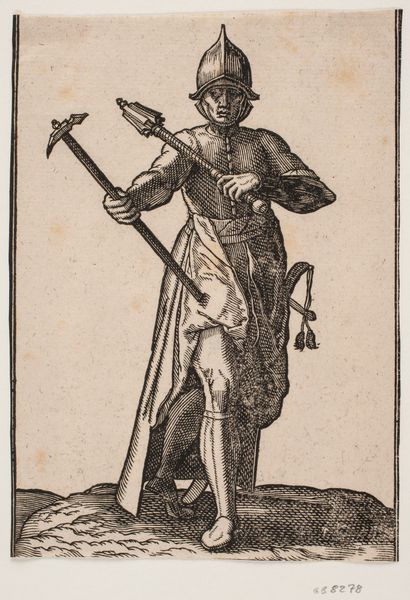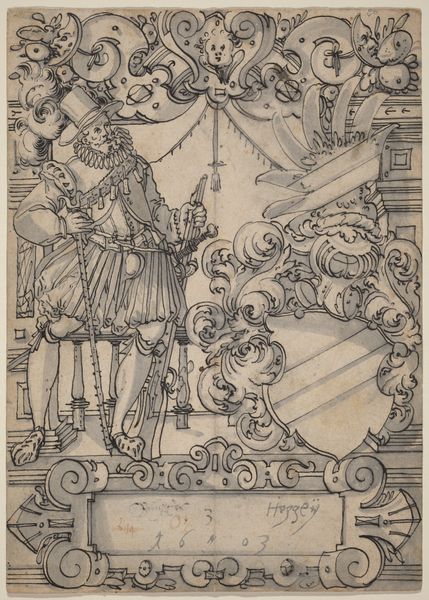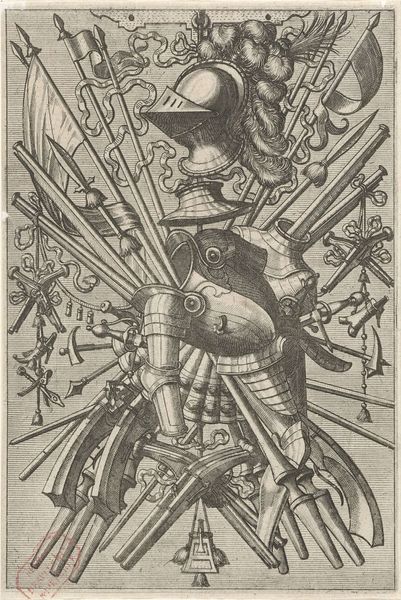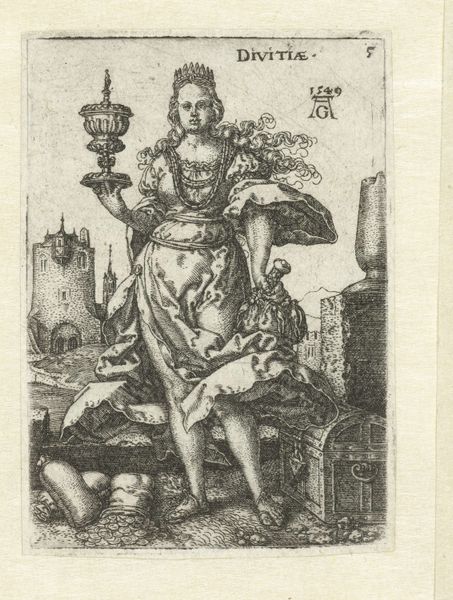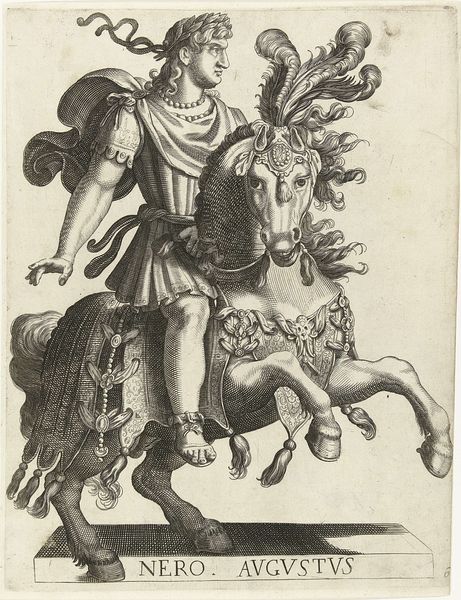
drawing, graphic-art, print, intaglio, engraving
#
drawing
#
graphic-art
#
baroque
# print
#
caricature
#
intaglio
#
caricature
#
coloured pencil
#
14_17th-century
#
engraving
Dimensions: 10 1/4 x 7 3/4 in. (26.04 x 19.69 cm) (image)11 1/8 x 7 7/8 in. (28.26 x 20 cm) (plate)14 3/8 x 9 3/4 in. (36.51 x 24.77 cm) (sheet)19 3/4 x 15 3/4 x 1 1/8 in. (50.17 x 40.01 x 2.83 cm) (outer frame)
Copyright: Public Domain
Editor: The first impression is quite startling. It's a peculiar and almost surreal juxtaposition of the human form and ornate fountains. Curator: Indeed. What we're viewing here is Nicolas de Larmessin II’s "Fountain Craftsman," a baroque engraving from around 1690. It belongs to a series depicting various trades and professions of the period, using the tools and products of their craft to compose the figure’s attire. Editor: The figure is literally built from fountains! Notice how his head is itself a fountainhead. How striking to merge man and machine—a potent statement of the human mastery over nature! But also a touch…grotesque, wouldn’t you agree? Curator: "Grotesque" implies a certain deviation from natural forms, but here, the artist deliberately constructs the entire visual field based on proportional relationships, on vertical symmetry above all else, so one can understand the internal logic and composition. The drapery, for instance, flows with carefully considered lines, and leads us through a hierarchy of forms and visual relationships. Editor: Absolutely. But what's being signified here through fountains and hydraulic symbols? Water, of course, always evokes concepts of renewal, purification, and the unconscious. To adorn the craftsman's very being with such potent symbols reveals water’s undeniable force within the framework of society itself. Curator: One might also interpret the use of specific components – each level a plane onto which visual order is orchestrated with detail and repetition; his scepter, his arm, each tier below. One could focus not on the representation, but on the use of line itself – the etching which conveys so much. Editor: A keen observation. Ultimately, this baroque-era artwork merges practicality and representation. The artist captures both the external work as well as the craftsman’s role, who literally embodies his service in an almost ritualistic capacity. Curator: It is truly a masterful print when observed formally. Editor: Yes, this has added an exciting angle on viewing the art. Thank you!
Comments
No comments
Be the first to comment and join the conversation on the ultimate creative platform.

